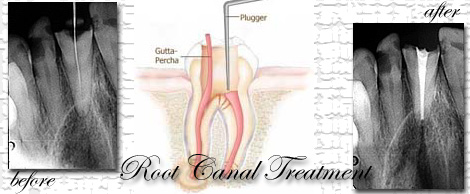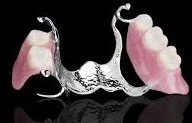Dental Treatment
Tooth Cleaning&Polishing

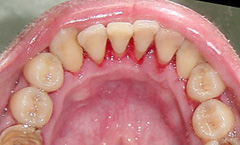
Dental cleanings involve removing plaque (soft, sticky, bacteria infested film) and tartar (calculus) deposits that have built up on the teeth over time. Your teeth are continually bathed in saliva which contains calcium and other substances which help strengthen and protect the teeth. While this is a good thing, it also means that we tend to get a build-up of calcium deposits on the teeth. This chalky substance will eventually build up over time, like limescale in a pipe or kettle. Usually it is tooth coloured and can easily be mistaken as part of the teeth, but it also can vary from brown to black in colour.

If the scale, or calculus (tartar, as dentists like to call it) is allowed to accumulate on the teeth it will unfortunately provide the right conditions for bacteria to thrive next to the gums. The purpose of the cleaning and polishing is basically to leave the surfaces of the teeth clean and smooth so that bacteria are unable to stick to them and you have a better chance of keeping the teeth clean during your regular home care.
Also it leaves your teeth feeling lovely and smooth and clean, which is nice when you run your tongue around them. Actually, come to think of it, there’s nothing worse than someone you fancy running their tongue around your teeth and finding a piece of spinach or something! Still, if they’re hungry…
The professional cleaning of teeth is sometimes referred to as prophylaxis (orprophy for short). It’s a Greek word which means “to prevent beforehand” – in this case, it helps prevent gum disease. ![]()
Dental Veneers
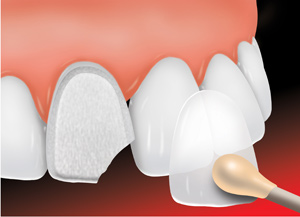
Dental veneers (sometimes called porcelain veneers or dental porcelain laminates) are wafer-thin, custom-made shells of tooth-colored materials designed to cover the front surface of teeth to improve your appearance. These shells are bonded to the front of the teeth changing their color, shape, size, or length.
Dental veneers can be made from porcelain or from resin composite materials. Porcelain veneers resist stains better than resin veneers and better mimic the light reflecting properties of natural teeth. Resin veneers are thinner and require removal of less of the tooth surface before placement. You will need to discuss the best choice of veneer material for you with your dentist.
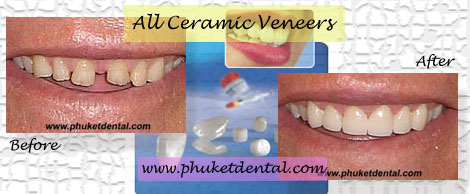
What Types of Problems Do Dental Veneers Fix?
Veneers are routinely used to fix:
- Teeth that are discolored -- either because of root canal treatment; stains from tetracycline or other drugs, excessive fluoride or other causes; or the presence of large resin fillings that have discolored the tooth
- Teeth that are worn down
- Teeth that are chipped or broken
- Teeth that are misaligned, uneven, or irregularly shaped (for example, have craters or bulges in them)
- Teeth with gaps between them (to close the space between these teeth)
![]()
Removable Partial Dentures
Dental Flipper/Temporary Plate

Vitallium Partial Dentures
Removable partial dentures usually consist of replacement teeth attached to pink or gum-colored plastic bases. Depending on your needs, your dentist will design a partial denture for you. A partial denture may have a metal framework and clasps that connect to your teeth, or they can have other connectors that are more natural looking. In some cases, a removable partial denture is made to attach to your natural teeth with devices called precision attachments. Precision attachments are generally more esthetic than clasps.
Crowns on your natural teeth are sometimes needed to improve the fit of a removable partial denture and they are usually required with attachments. Partial dentures with precision attachments generally cost more than those with clasps. Consult with your dentist to find out which type is right for you.
The Temporary Plate used for provisonal prosthesis during the waiting period for fixed ceramic bridges or dental implants. Made from acrylic resin.
Partial Denture with Telescope Crown
Conventional Vitallium Partial Dentures have metal clasp showing when smiling which looks not natural.
Vitallium Partial Denture which have Telescope Crown functioned as the attachment create good retention and esthetics.
 |
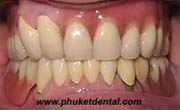 |
 |
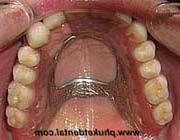 |
Complete/Full Denture
 |
|
 |
 |
A denture is a removable replacement for missing teeth and the tissues connected to those teeth. It is made of acrylic plastic and sometimes porcelain and metal materials. A denture closely resembles natural gum tissue and teeth.
Dental Implant
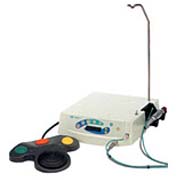

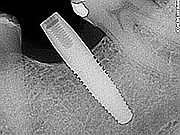


A dental implant is an artificial tooth root that is placed into your jaw to hold a replacement tooth or bridge. Dental implants may be an option for people who have lost a tooth or teeth due to periodontal disease, an injury, or some other reason. ![]()
Dental Digital Xray Imaging System
Portable Digital Xray Camera
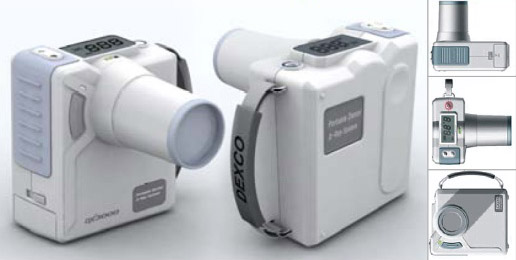
Dental Digital Xray Sensor/Direct USB

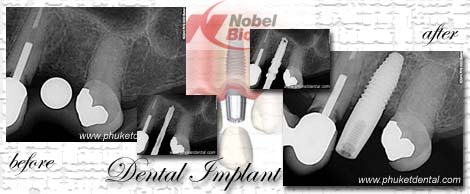
In-Office Teeth Whitening
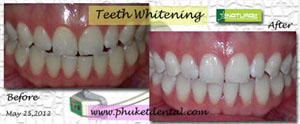
Professional in-office teeth whitening is the most popular cosmetic dental procedure in the world today. Unlike home-use whitening systems that incorporate low-dose bleaching agents, in-office whitening (also known as power bleaching, power whitening, professional whitening or chairside whitening) takes place under carefully monitored conditions which allow for the safe, controlled, pain-free use of a relatively high concentration of bleaching gel – yielding results that are visible immediately.

Advantages of In-Office Whitening
- No other teeth whitening procedure produces faster results.
- This is the safest form of tooth bleaching.
- Gum and tooth sensitivity (formerly drawbacks to in-office bleaching) are more controllable today due to thicker peroxide gels (that don't soak into the teeth as much as previous gels) and the use of desensitizers such as potassium nitrate and fluoride.
Disadvantages of In-Office Whitening
- In-office bleaching is more expensive than take-home alternatives. Its cost, on average, is $650, compared to $400 for take-home trays and under $100 for over-the-counter bleaching trays or whitening strips.
- Results can be unpredictable, depending on factors such as age, heredity and the type of staining that is present.
- In-office bleaching is not a permanent solution. Shortly after treatment is completed, the teeth resume accumulating stains. Many dentists therefore recommend home maintenance follow-up with a lower-percentage bleach that can be kept on the teeth for longer periods of time. ![]()
Tooth Extraction

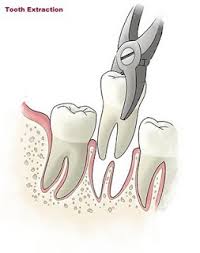
Gum disease can loosen or severely damage a tooth. A tooth that is severely damaged may need to be removed. Your dentist or a surgeon who specializes in surgeries of the mouth (oral and maxillofacial surgeon) can remove a tooth.
Before removing your tooth, your dentist will give you a local anesthetic to numb the area where the tooth will be removed. A stronger, general anesthetic may be used, especially if several or all of your teeth need to be removed. General anesthetic prevents pain in the whole body and will make you sleep through the procedure.
After the tooth is removed, you may need stitches. You can gently bite down on a cotton gauze pad placed over the wound to help stop the bleeding. The removed tooth can be replaced with an implant, a denture, or a bridge. A bridgecamera.gif is a replacement for one or more (but not all) of the teeth and may be permanent or removable. ![]()
Ceramic/Porcelain Inlays&Onlays
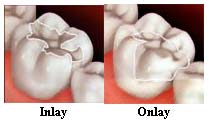
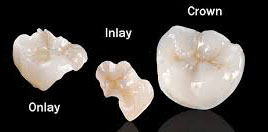
Inlays and onlays are a conservative alternative to full coverage dental crowns. Also known as indirect fillings, inlays and onlays offer a well-fitting, stronger, longer lasting reparative solution to tooth decay or similar damage. These restorations are beneficial from both an esthetic and functional point of view.
Inlays and onlays can often be used in place of traditional dental fillings to treat tooth decay or similar structural damage. Whereas dental fillings are molded into place within the mouth during a dental visit, inlays and onlays are fabricated indirectly in a dental lab before being fitted and bonded to the damaged tooth by your dentist.
The restoration is dubbed an "inlay" when the material is bonded within the center of a tooth. Conversely, the restoration is dubbed an "onlay" when the extent of the damage requires inclusion of one or more cusps (points) of the tooth or full coverage of the biting surface.
Inlays and Onlays: The Benefits of the Conservative Approach
Superior Fit: Inlays and onlays offer a conservative preparation that preserves as much healthy tooth as possible. They are a great choice if you have minimal to moderate tooth decay that extends into a flossing area, offering an excellent alternative to full coverage crowns.
Tooth Color: Boasting esthetic longevity, inlays and onlays are not likely to discolor over time as tooth-colored resin fillings often do.
Tooth Structure Safeguard: Inlays and onlays preserve the maximum amount of healthy tooth structure while restoring decayed or damaged areas, helping to ensure functional longevity.
Easy Tooth Cleaning: Because the fit is tailored at all edges and the preparation minimal, your tooth can be easier to clean than it would be with full coverage restorative alternatives such as a dental crown. Composite fillings can shrink during the curing process, whereas prefabricated porcelain or gold inlays and onlays will not (ensuring a precise fit).
Tight Space Fulfillments: If you have a cavity between your teeth, consider an inlay rather than a direct composite filling. Inlays are better at sealing teeth to keep out bacteria; they are easy to clean, will not stain and offer exceptional longevity.
Strength and Stability: Inlays and onlays are extremely stable restorative solutions for the treatment of decay. The superior fit and durable material make inlays and onlays a stable choice that can actually strengthen a damaged tooth.
Weak Tooth Protector: An onlay can protect the weak areas of the tooth. The procedure does not require the complete reshaping of the tooth.
Adhesive/Direct Composite Bonding

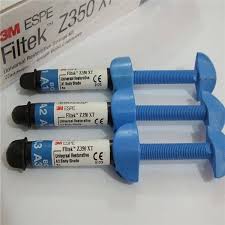
Dental bonding is a procedure in which a tooth-colored resin material (a durable plastic material) is applied and hardened with a special light, which ultimately "bonds" the material to the tooth to restore or improve person's smile.

For What Conditions Is Dental Bonding Considered?
Dental bonding is an option that can be considered:
- To repair decayed teeth (composite resins are used to fill cavities)
- To repair chipped or cracked teeth
- To improve the appearance of discolored teeth
- To close spaces between teeth
- To make teeth look longer
- To change the shape of teeth
- As a cosmetic alternative to amalgam fillings
- To protect a portion of the tooth's root that has been exposed when gums recede
Dental Crowns
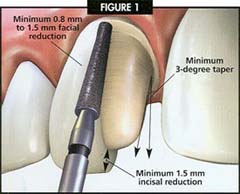 |
 |
 |
 |
A dental crown is a tooth-shaped "cap" that is placed over a tooth -- to cover the tooth to restore its shape and size, strength, and improve its appearance.
The crowns, when cemented into place, fully encase the entire visible portion of a tooth that lies at and above the gum line. ![]()
Dental Bridges
 |
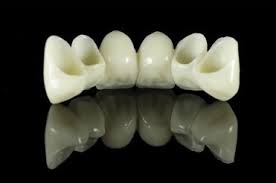 |
A bridge is made up of two or more crowns for the teeth on either side of the gap -- these two or more anchoring teeth are called abutment teeth -- and a false tooth/teeth in between. These false teeth are called pontics and can be made from gold, alloys, porcelain, or a combination of these materials. Dental bridges are supported by natural teeth or implants. ![]()
What is root canal treatment?
Root canal treatment (also called ‘endodontics') is needed when the blood or nerve supply of the tooth (called the ‘pulp') is infected through decay or injury. You may not feel any pain in the early stages of the infection. In some cases your tooth could darken in colour, which may mean that the nerve of the tooth has died (or is dying). This would need root canal treatment.
